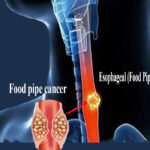Commonly occurring cancers irrespective of sex include Oropharyngeal cancer, Lung cancer, Prostate cancer, Stomach cancer and Blood cancer. Please have a regular follow up and health checks with your primary care physician to stay healthy.


Cancer occurs due to abnormal proliferation of cells in the body. The primary factor driving the formation of cancer cells is the mutation or alteration of the cell’s genetic material. Although cancer can occur in anyone, there are certain differences in the incidence of types of cancer between men and women. It’s important that the cancers are diagnosed when they are in nascent stage so that treatment could yield high cure rate and minimize morbidity associated with cancer.
Common cancers among women include:
1. Breast cancer: Screening in the form of mammogram is recommended to all women, to pick up the disease in nascent stages when the person is asymptomatic. The disease manifests as painless lump in the breast, skin changes, nipple discharge, and lump in the axilla. Diagnosis is made by imaging (diagnostic mammogram) and confirmed by a biopsy.
Also Read: Breast cancer : One in every five women in India carry anomalies in breasts
2. Cervical cancer: Screening in the form of PAP smear is recommended to diagnose the condition in early stages. The disease manifests as irregular menses, intermenstrual bleeding (i.e., bleeding in between the menses cycle), bleeding after sexual intercourse, foul smelling vaginal discharge. The disease is initially identified by a PAP smear. Positive results are followed with colposcopy and biopsy.
Commonly occurring cancers irrespective of sex include:
1. Oropharyngeal cancer: Common among tobacco chewers. There’s no specific screening test. Disease is usually picked up by a routine dental and oral cavity exam. If symptoms arise, there could be painless ulcer, soreness of mouth, lump in the neck, difficulty swallowing. Diagnosis is confirmed by biopsy of the lesion.
2. Lung cancer: Usually arises in long term smokers. Symptoms include long standing cough, coughing up blood, weight loss and fatigue, chest pain, recurrent chest infections. Diagnosis is done by imaging of the chest and confirmed by a biopsy.
Also Read: Lung cancer : A significant risk factor is cigarette smoking
3. Prostate cancer: Usually asymptomatic in initial stages. Symptoms, if present include urinary urgency, urinary frequency, and pain during urination, passing blood in urine. Sometimes disease is diagnosed in advanced stage by which time, metastases would have occurred. The symptoms of metastases (distant spread) include bone pain (especially the back), swelling of legs, weight loss. If the disease is suspected, the doctor will suggest DRE (Digital Rectal Exam) to assess prostate, PSA (Prostate Specific Antigen) test, imaging in the form of MRI, and biopsy of the prostate.
4. Stomach cancer: Usually asymptomatic in initial stages. Symptoms start when the disease has already progressed. Symptoms include vomiting, abdominal pain, indigestion, loss of appetite and weight, passing black coloured stools. Diagnosis is picked up by the endoscopy and is confirmed by biopsy. The patient may be subjected to imaging to stage the disease, so that management is planned accordingly.
5. Blood cancer: Common in men than in women. There are various types of blood cancers of which lymphoma is common. Symptoms include swelling of the lymph nodes, long standing fever, night sweats, bleeding from gums and weight loss. Diagnostic tests include blood film and visualization under microscope, blood counts and imaging studies. This is followed by procedures like biopsy of lymph node and/or bone marrow aspiration and biopsy.


Dr. Sudarshan S
Consultant Physician, Bengaluru











